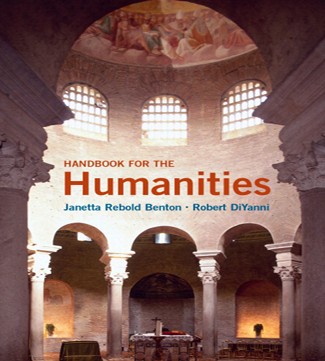Handbook for the Humanities 1st Edition DiYanni Benton Test Bank
$35.00
Handbook for the Humanities 1st Edition DiYanni Benton Test Bank
978-0205949786
Contents
Chapter 1: Ancient Civilizations: Prehistory to Egypt 4
Chapter 2: Ancient Greece 6
Chapter 3: Ancient Rome 8
Chapter 4: Judaism, Christianity, and Islam 10
Chapter 5: Middle Ages 12
Chapter 6: Early Renaissance 14
Chapter 7: Later Renaissance 16
Chapter 8: Seventeenth Century (Baroque) 18
Chapter 9: Eighteenth Century (Enlightenment) 20
Chapter 10: Earlier Nineteenth Century 22
Chapter 11: Later Nineteenth Century 24
Chapter 12: Earlier Twentieth Century 26
Chapter 13: Later Twentieth Century 28
Chapter 14: Twenty-First Century 30
Chapter 1: Ancient Civilizations: Prehistory to Egypt
1) What change occurred in human civilization during the Neolithic period?
a) Glaciers forced peoples to move south to the Mediterranean and Africa.
b) The worship of gods and animals became a primary subject for artworks.
c) Humans shifted from being hunters and gathers to herders and farmers.
d) Patterns of behavior first developed among different groups of nomads.
Answer: c
Page reference: 2, PREHISTORY
2) Which statement is true about both the Paleolithic cave paintings in Europe and Stone Age Australian “X-ray style” rock paintings?
a) The internal organs, muscles, and bones of the animals are shown.
b) The paintings were created as part of a ritual animal sacrifice.
c) The humans and animals are idealized and show specific individuals.
d) The animals in the paintings were consumed as food by humans.
Answer: d
Page reference: 2–3; PREHISTORY
3) Stonehenge is referred to as a cromlech because:
a) the henge has a religious purpose.
b) megaliths were used in its construction.
c) it is made from posts and lintels.
d) the circle of stones relates to solstices.
Answer: a
Page reference: 3–4; PREHISTORY
4) Which of the following statements is true about the Akkadian Victory Stele of Naram-Sin?
a) The scene is taken from the Epic of Gilgamesh.
b) The king is shown largest among all the figures.
c) The artwork was made to serve as a gravestone.
d) The theme relates to a religious creation myth.
Answer: b
Page reference: 6; MESOPOTAMIA
5) Which term best describes the religion developed by Zoroaster, and adopted as part of Persian culture?
a) polytheistic
b) dualistic
c) anthropomorphic
d) monotheistic
Answer: b
Page reference: 8; MESOPOTAMIA
6) The Law Code of Hammurabi was created by the king of which civilization?
a) Assyria
b) Sumeria
c) Persia
d) Babylon
Answer: d
Page reference: 8; MESOPOTAMIA
7) What role did King Narmer play in ancient Egyptian civilization?
a) He drove the Akkadians out of Egypt.
b) He instituted the use of hieroglyphics.
c) He unified Upper and Lower Egypt.
d) He ordered the first pyramid constructed.
Answer: c
Page reference: 10; EGYPT
8) The ancient Egyptian system of hieroglyphs is similar to the cuneiform type of writing because:
a) each glyph represents a unit of sound.
b) it is composed of symbolic pictograms.
c) the writing was used for agricultural records.
d) objects and people are shown realistically.
Answer: b
Page reference: 11; EGYPT
9) Egyptian sculpture maintained a similar look over many centuries because:
a) a specific set of conventions dictated artistic representations.
b) the Egyptian civilization was isolated from outside influences.
c) artists were trained by a central school overseen by the pharaoh.
d) religious beliefs restricted artists to portray only royalty and gods.
Answer: a
Page reference: 16; EGYPT
10) What important change occurred in Egyptian culture during the reign of Akhenaten?
a) The capital moved to Thebes from Tell-el-Amarna.
b) Monumental architecture began to be constructed.
c) The worship of one god replaced polytheism.
d) Artists began to focus on showing scenes from daily life.
Answer: c
Page reference: 18; EGYPT
Be the first to review “Handbook for the Humanities 1st Edition DiYanni Benton Test Bank” Cancel reply
Related products
Test Bank












Reviews
There are no reviews yet.